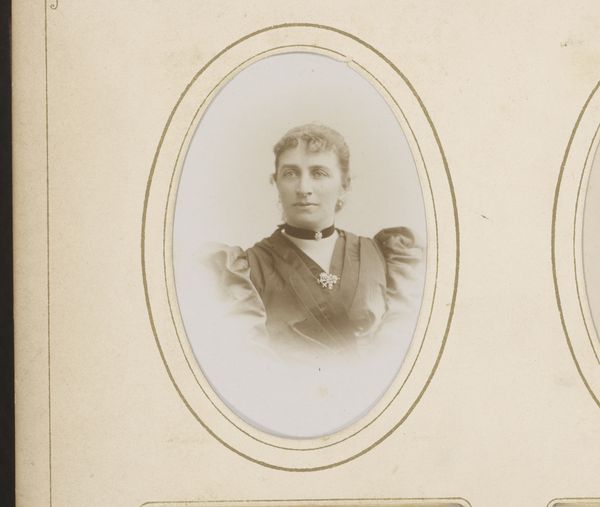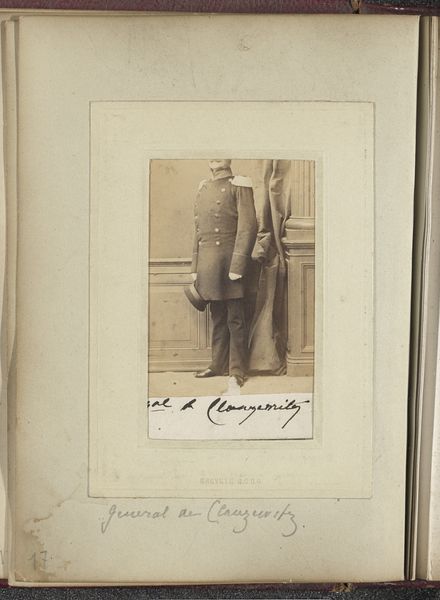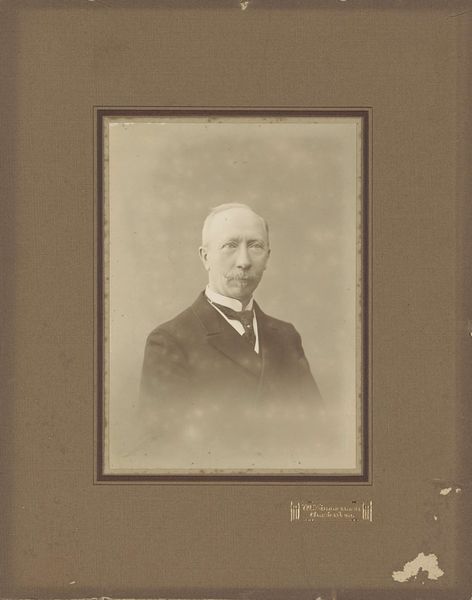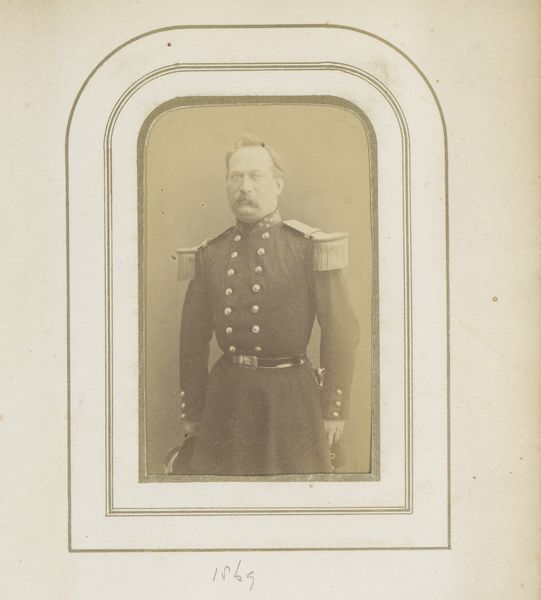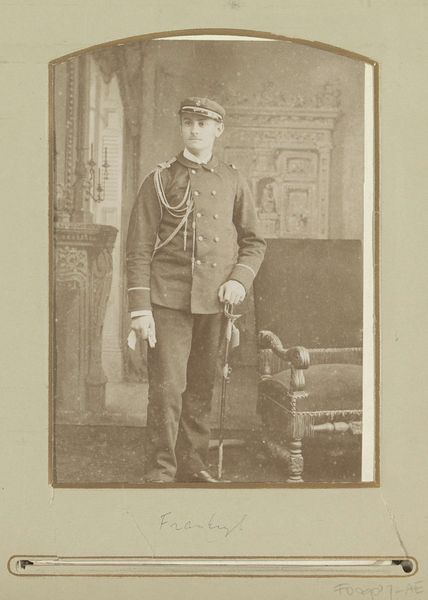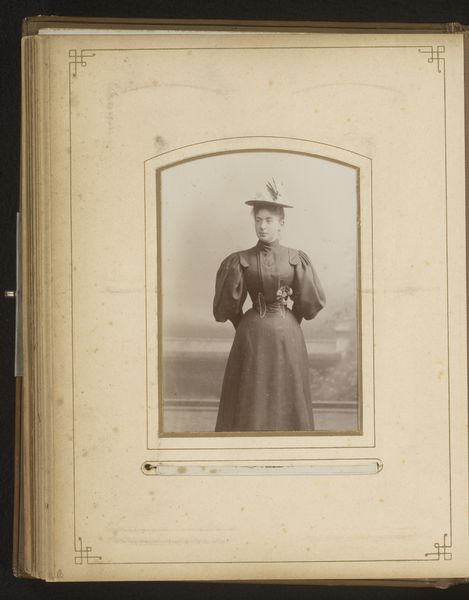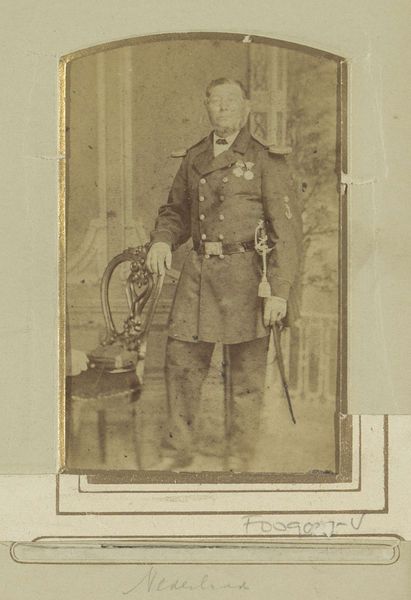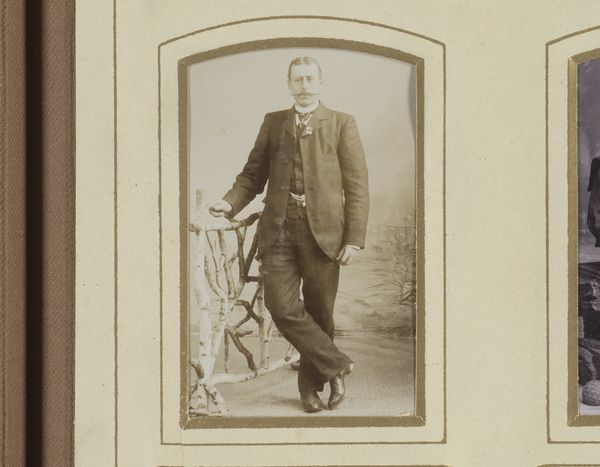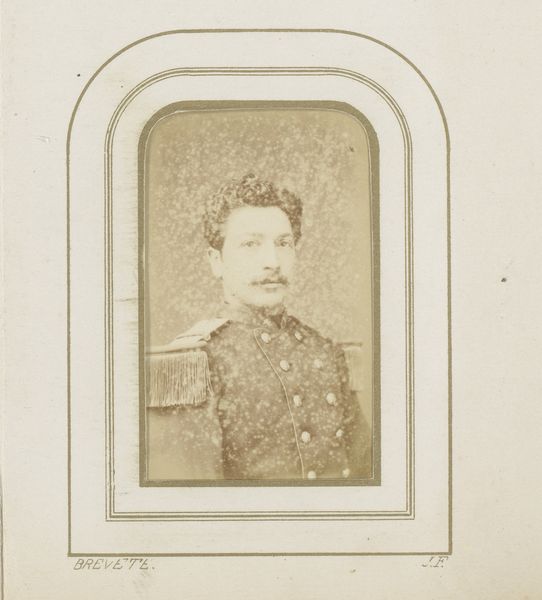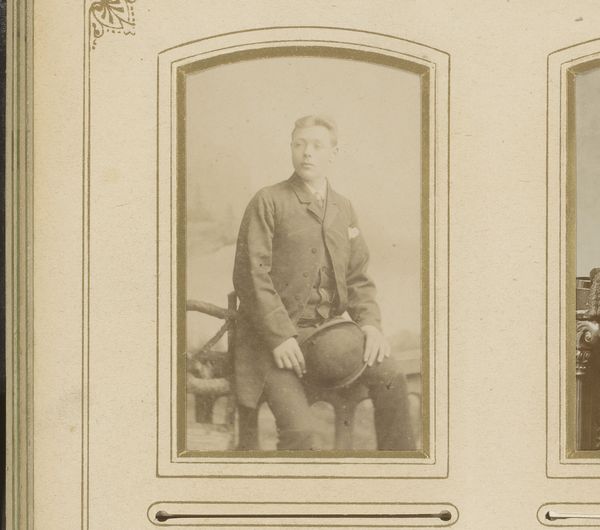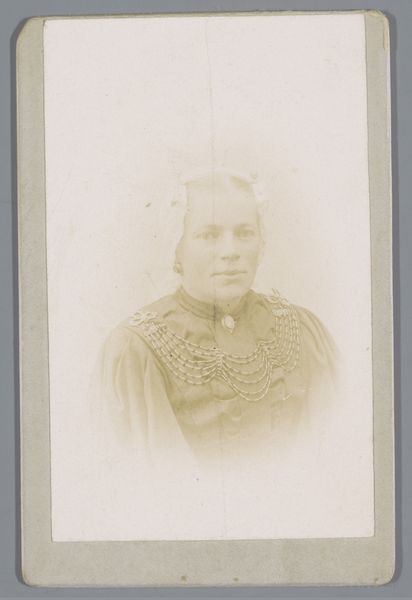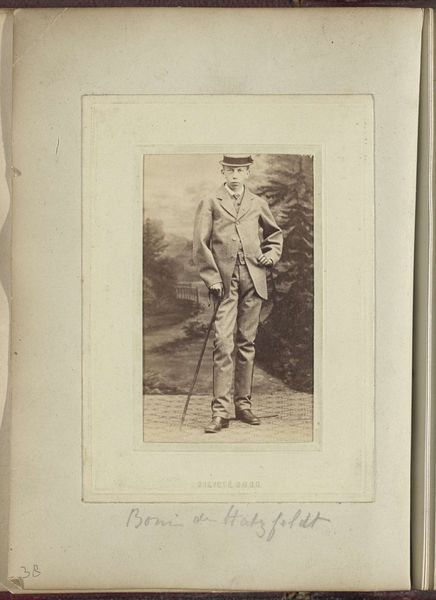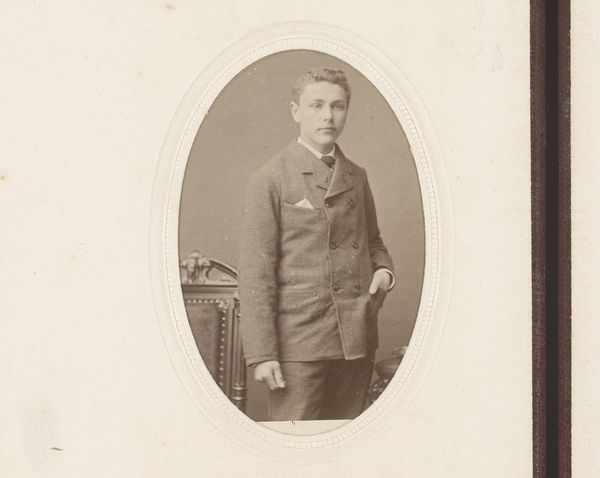
photography, gelatin-silver-print
#
landscape
#
photography
#
gelatin-silver-print
#
watercolor
Dimensions: height 82 mm, width 108 mm
Copyright: Rijks Museum: Open Domain
Curator: Here we have a gelatin silver print by Hendrik Doijer, dating from the early 1900s. The photograph, entitled "De 'Kortenaer' vóór Paramaribo," shows the ship Kortenaer in front of Paramaribo. It feels like a still from some lost film about exploration or maybe conquest, but quieter somehow. Editor: It's more melancholic than triumphant, isn’t it? I’m drawn to the layers – the blurred foliage in the foreground against the sharp lines of the ship further back. The textures in this photograph give the impression that there’s an odd combination of industrial materials meeting nature and organic, local, material at every turn. What can you tell me about its production as an image? Curator: Doijer worked in Paramaribo in a period when photography was becoming more widely used and accessible. But what interests me is how he seems to be deliberately framing a relationship with the indigenous surroundings to tell a colonial story with the modern image of industrial shipping, that he does in his portrait photography of local inhabitants too. Editor: Absolutely. Thinking about a gelatin silver print, we should consider that this artwork came to exist via very specific ingredients and processes that rely on silver. Mining practices, industry labor, and trade networks supported its emergence. Did he work alone? How readily accessible would the materials and development process have been? Curator: I imagine there was a certain isolation in the technique – setting up shots, using a darkroom; yet the images capture community engagement from multiple sides of an imbalance of power. Editor: Right. It makes me think about access. About how these materials created a new form of value, both material and representational. Like looking at how landscape painting often obscured its material roots in paint and canvas, a landscape photograph hides a more extensive and colonial network in its capture, one that required globalized access. It wasn't neutral or naive. Curator: Perhaps that awareness, of what’s both revealed and concealed in the photograph, is what makes it stay with me. Thank you for pointing that out. Editor: And thank you. I find the print far more suggestive than at first glance, loaded with tensions, so carefully—and perhaps calculatedly— composed.
Comments
No comments
Be the first to comment and join the conversation on the ultimate creative platform.
